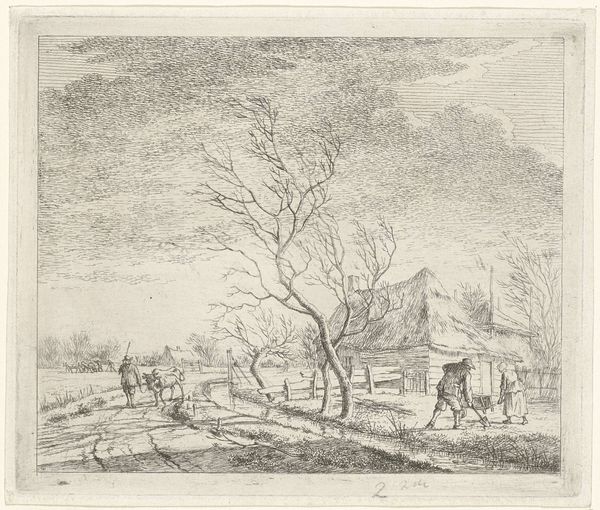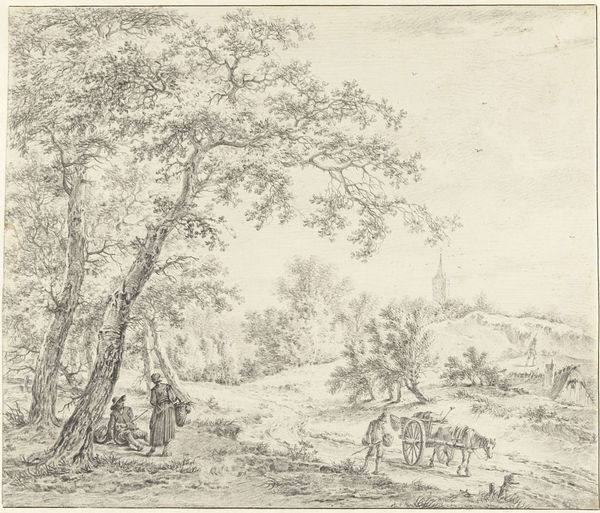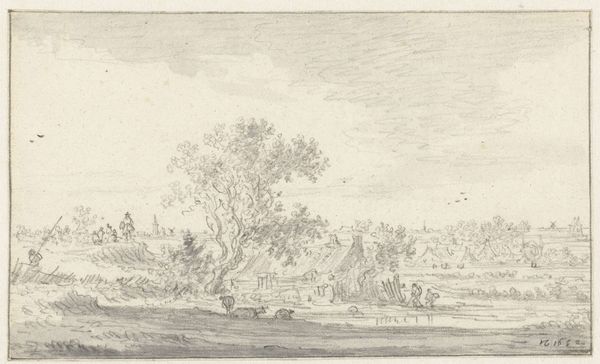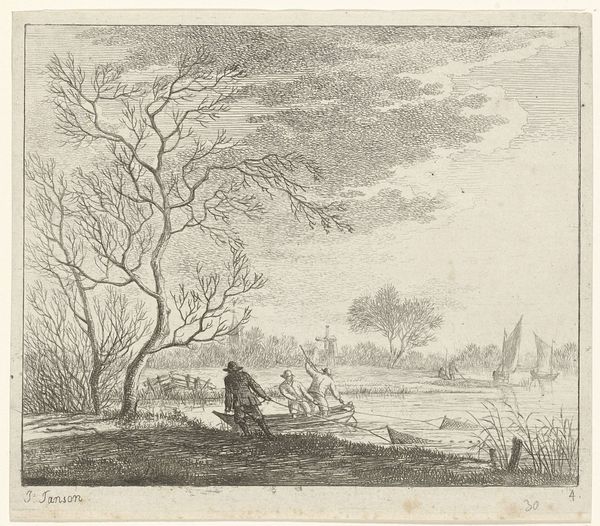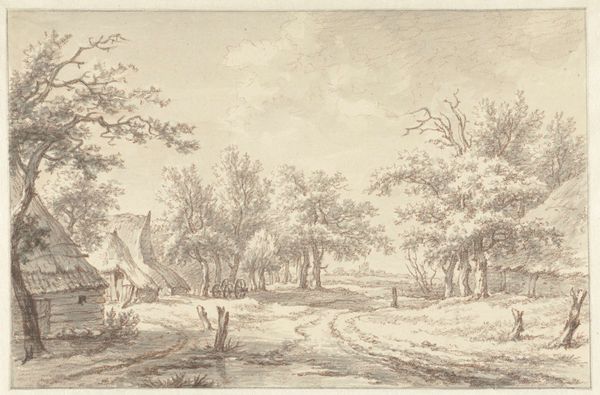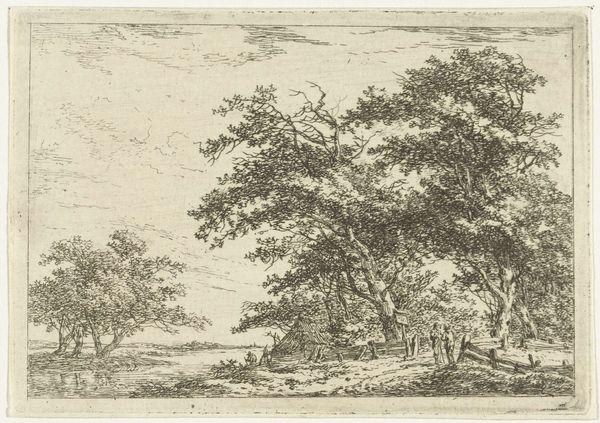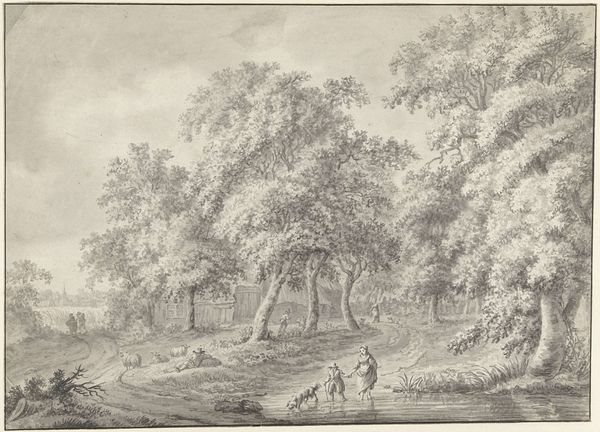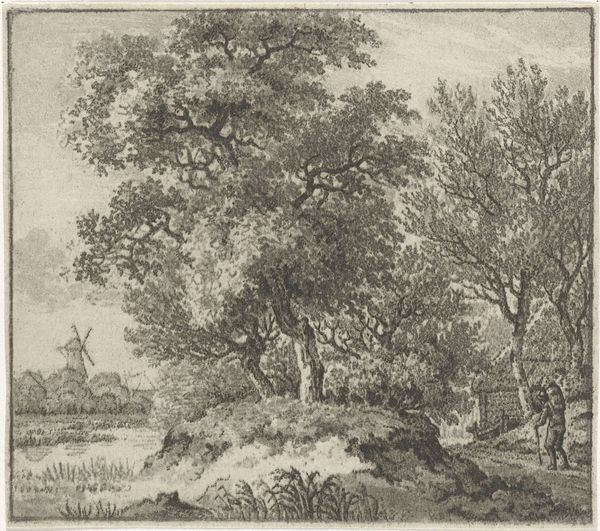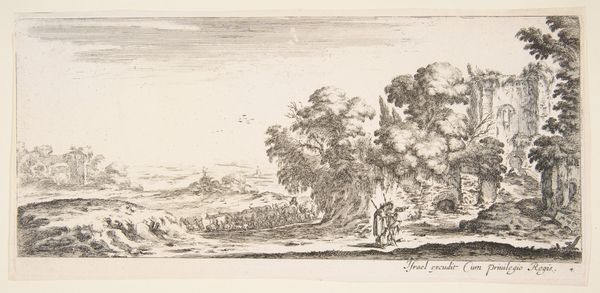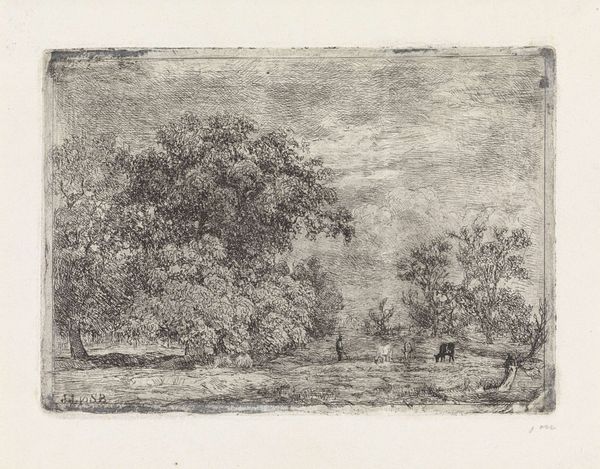
etching
#
dutch-golden-age
#
etching
#
landscape
#
etching
#
genre-painting
Dimensions: height 143 mm, width 170 mm
Copyright: Rijks Museum: Open Domain
Curator: Here we have Johannes Janson’s "Winterlandschap met schaatsers", an etching from 1783, currently held at the Rijksmuseum. Editor: Stark. I’m struck immediately by the way the bare trees claw at that oppressive sky. A palpable sense of cold. Curator: As an etching, the labor involved is significant. Think of the processes: the grounding, the drawing through the wax, the acid biting into the copperplate… These all dictated the visual vocabulary and the distribution and consumption patterns. It's not just image creation; it’s the social dynamics of image dissemination during that period. Editor: True, but let’s not neglect the intrinsic compositional elements. See how the strong diagonal of the fallen tree bisects the scene, creating this clear division between the figures on the ice and the woodcutter in the foreground. It’s a beautiful study in contrasts—play versus work, community versus solitude. Curator: Note the repetitive line work used to depict the clouds; these were crucial to achieve the grey, melancholic weather which dominates the etching's meaning, impacting production needs too. One can also view those enjoying the leisure in terms of social economics. Are they peasants or wealthy landowners, the latter now having to be circumspect to keep hold of assets. Editor: Maybe, but I also view the frozen pond almost like a stage, with these figures becoming actors in a winter drama. The way their bodies are rendered using simplistic lines give them, for me, an allegorical nature and a sense of freedom across the ice. Curator: Freedom perhaps won by others’ subjugation. And think, where was Janson, etching the original plate. What level of income and stability did he have? What did the purchasing customers then bring with them to the work in hand? Editor: I agree it’s multilayered but ultimately the power, for me, is still rooted in the visual experience—the cold beauty that Janson manages to convey, through masterful compositional and technical choices. The image is evocative beyond its material production circumstances. Curator: It's compelling to delve into its social and manufacturing origins which adds much nuance to its significance as cultural evidence, which of course enhances it further in terms of technique and delivery. Editor: Absolutely. By appreciating the technical mastery while considering its economic and historical origins, it is rewarding on all levels.
Comments
No comments
Be the first to comment and join the conversation on the ultimate creative platform.
